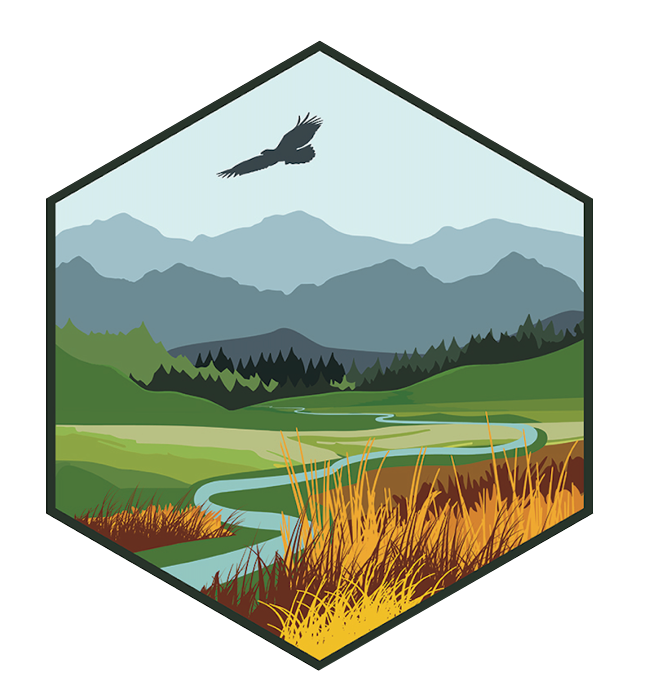WCS Climate Adaptation Fund Releases New Call for Proposals
NC-CASC Consortium Partner Wildlife Conservation Society has released a call for proposals for the Climate Adaptation Fund , which supports the implementation of on-the-ground conservation actions designed to help wildlife and ecosystems adapt to a changing climate.
Read the April Edition of the Tribal Climate Newsletter
Read the April edition of the Tribal Climate Newsletter.
James Rattling Leaf, Sr., to give presentation at the Boulder Labs Diversity Council
On April 21st, James Rattling Leaf Sr., will give a presentation titled, “Engaging with Native American Communities: Mitakuye Oyasin” at the Boulder Labs Diversity Council.
New Paper: The impact of production network economies on spatially-contiguous conservation—Theoretical model with evidence from the U.S. Prairie Pothole Region
A paper funded by the NC CASC was recently published in the Journal of Environmental Economics and Management titled, "The impact of production network economies on spatially-contiguous conservation—Theoretical model with evidence from the U.S. Prairie Pothole Region."
Watch Stefan Tangen’s Latest Webinar Presentation, “Building Tribal Community Resilience: The Role of Nonprofits”
On March 31st, Stefan Tangen and Dr. Valerie A. Small, the National Program Director at Trees, Water, and People, gave the webinar presentation, “Building Tribal Community Resilience: The Role of Nonprofits”.
Molly Cross Testifies at Hearing of the House Natural Resources Subcommittee on Parks, Forests, and Public Lands
NC CASC Consortium Partner, Molly Cross, testified on a March 23rd, 2021 hearing of the House and Natural Resources Subcommittee on Parks, Forests, and Public Lands, on the role of federal programs in supporting natural climate solutions in the U.S.
New Multi-Agency Report on Sagebrush Conservation Features Two Members of the NC CASC
USGS released a new multi-agency report on sagebrush, "Sagebrush Conservation Strategy—Challenges to Sagebrush Conservation". Robin O'Malley (retired, NC CASC), Nicole DeCrappeo (NW/NC CASCs), and Stephen Jackson (SW/SC CASCs) were the co-conveners for the Chapter L Climate Adaptation writing team.
When
Date: Thursday, April 8, 2021, 11a -12p MDT
Presented by: Justin Gude, Wildlife Research & Technical Services Bureau Chief, Montana Fish, Wildlife & Parks
Register in advance for this meeting:
https://cuboulder.zoom.us/meeting/register/tJYsc-GgqjooEtO1BVH4MgBmHjTjJaIA75B7
After registering, you will receive a confirmation email containing information about joining the meeting.
Abstract:
Concerns about mountain goats have arisen in many areas in recent years. Climate change may negatively affect this alpine ungulate, and recent evidence indicates that mountain goats harbor respiratory pathogens associated with pneumonia epidemics in bighorn sheep. Mountain goat demographic and population data are difficult to collect and sparsely available, exacerbating these concerns. We used a structured decision making process to address these issues and uncertainties, building from a successful track record of using this approach to make management program decisions in Montana, USA. Our analysis predicted that translocations to establish new mountain goat populations would result in more area occupied by mountain goats at mid-century, regardless of the effects of climate change. We found that various management actions may improve population trends, although this was associated with considerable uncertainty. Value of information analyses revealed that more information about population dynamics, the presence of pneumonia-associated pathogens, and the consequences of mixing microbial communities during translocations will affect choices among alternative management actions. Optimal management choices also varied by individual risk tolerance for disease transmission, because translocations are expected to increase disease risks for mountain goats and sympatric bighorn sheep. We recommend that managers determine the tolerance for disease risks associated with translocations that they and constituents are willing to accept. From this, an adaptive management program can be constructed wherein a portfolio of management actions are chosen based on risk tolerance in each population, combined with the amount that uncertainty is reduced when paired with monitoring, to improve mountain goat conservation efforts.
About the speaker:
Justin Gude has been the Wildlife Research & Technical Services (RTS) Bureau Chief for Montana Fish, Wildlife & Parks (FWP) since 2008. The RTS Bureau consists of wildlife research, health, biometrics, and survey programs, and their work covers a variety of taxa ranging in size from songbirds and bats to moose, in all corners of the state. Justin is responsible for overseeing the work of the RTS Bureau as well as ensuring integration of the wildlife research and management programs at FWP, so he is often involved in facilitating working groups such as that described in this presentation. He completed the U.S. Fish & Wildlife Service Decision Analysis Certification Program and has been involved in many structured decision-making processes, and he also is on the NC CASC- USDA Northern Plains Regional Climate Hub Joint Stakeholder Committee.
Aparna Bamzai-Dodson Featured on USGS Instagram
USGS Deputy Director, Aparna Bamzai-Dodson, was featured on one of USGS’ Instagram accounts, @usgs_wild, where her position at the NC CASC and PhD were highlighted.
Watch Our Latest Webinar on YouTube
The presentation recording from our latest webinar, "Our Changing Fire Regimes" on March 11th was posted to YouTube.
Contact Us
Want to see more? Do you have feedback? Was this site helpful? Send us an email!

